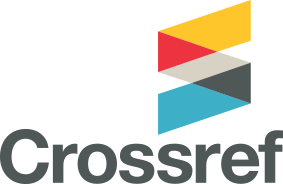APPLICATION OF NEURAL NETWORKS AND HYBRID STORAGE IN THE CREATION OF COMPUTER SYSTEMS
DOI:
https://doi.org/10.32689/maup.it.2025.2.21Keywords:
computer systems, machine learning, XGBoost, forecasting, hybrid storage, real-time data processing, intelligent control, automation, NoSQL, cloud technologiesAbstract
In modern computer systems, there is a growing need for fast processing, reliable storage, and accurate analysis of large amounts of data in real time. This is especially true for automated technological processes, intelligent environments, and distributed object management. In such circumstances, traditional data storage and analytics architectures become insufficiently flexible and scalable. The purpose of the article is to review modern approaches to building computer systems for predicting the state of dynamic objects by combining machine learning methods with a hybrid information storage architecture. The paper evaluates the accuracy of various artificial intelligence models for short-term parameter forecasting and analyzes the effectiveness of using hybrid data warehouses to ensure reliable, scalable, and productive operation of such systems in real time.Research methods: The study uses machine learning methods, including regression and ensemble models, as well as experimental modeling based on time series. Accuracy metrics and analysis of the influence of input parameters are used to evaluate the efficiency. Data processing and storage are implemented using a hybrid infrastructure.The scientific novelty of the study is that the analysis revealed significant prospects for integrating high-precision machine learning models with hybrid information warehouses to create an adaptive computer forecasting system capable of rapid response and long-term analytics in the context of processing large amounts of data in real time.Conclusions. The study proved the feasibility of using machine learning in combination with a hybrid data storage architecture to create intelligent computer forecasting systems. Based on experimental modeling, it was found that the XGBoost model demonstrates the highest accuracy, stability of results, and ability to interpret the impact of input parameters on output data, significantly outperforming other tested algorithms. An important component of the proposed approach was the construction of a hybrid information storage that combines the advantages of local storage, NoSQL systems, and cloud infrastructure. Such a structure allows for both rapid response to changes in input parameters and in-depth historical analysis for long-term planning and algorithm improvement. The proposed system can be adapted for a wide range of tasks in the field of automated control, digital monitoring, production process control, and other applications. It allows not only to increase the efficiency of computer systems, but also lays the foundation for the creation of self-learning, adaptive solutions of a new generation capable of working in real time with large amounts of data.
References
Agarap A. F. Deep Learning Using Rectified Linear Units (ReLU). arXiv preprint. 2019. arXiv:1803.08375.
Agatonovic-Kustrin S., Beresford R. Basic Concepts of Artificial Neural Network (ANN) Modeling and Its Application in Pharmaceutical Research. J. Pharm. Biomed. A. 2000. Vol. 22. P. 717–727. DOI: https://doi.org/10.1016/ S0731-7085(99)00272-1.
Akiba T. et al. Optuna: A Next-Generation Hyperparameter Optimization Framework. Proc. 25th ACM SIGKDD Int. Conf. on Knowledge Discovery & Data Mining. Anchorage, AK, USA, 2019. P. 2623–2631. DOI: https://doi.org/10.1145/3292500.3330701.
AL ISSA H. A. Regulating steady-state voltage deviation using fuzzy logic / Huthaifa AL Issa, L. Hussienat, A. Panov, K. Demchenko, O. Piskarov, O. Miroshnyk, T. Shchur//Przegląd Elektrotechniczny. 2025. Т. 2025.№. 3.
Awad M., Khanna R. Support Vector Regression. In: Efficient Learning Machines. – Berkeley: Apress, 2015. P. 67–80. ISBN: 978-1-4302-5990-9.
Bentéjac C., Csörgő A., Martínez-Muñoz G. A Comparative Analysis of Gradient Boosting Algorithms. Artif. Intell. Rev. 2021. Vol. 54. P. 1937–1967. DOI: https://doi.org/10.1007/s10462-020-09896-5.
Chen T., Guestrin C. XGBoost: A Scalable Tree Boosting System. Proc. 22nd ACM SIGKDD Int. Conf. on Knowledge Discovery and Data Mining. San Francisco, CA, USA, 13–17 Aug. 2016. P. 785–794. DOI: https:// doi.org/10.1145/2939672.2939785.
Chicco D., Warrens M. J., Jurman G. The Coefficient of Determination R² Is More Informative than SMAPE, MAE, MAPE, MSE and RMSE. PeerJ Comput. Sci. 2021. Vol. 7. e623. DOI: https://doi.org/10.7717/peerj-cs.623.
Hodson T. O. Root-Mean-Square Error (RMSE) or Mean Absolute Error (MAE): When to Use Them or Not. Geosci. Model Dev. 2022. Vol. 15. P. 5481–5487. DOI: https://doi.org/10.5194/gmd-15-5481-2022.
Karajan M., Sorenson P., Saleh K. Hybrid Cloud Storage: Research Status, Challenges, and Future Directions. Journal of Cloud Computing: Advances, Systems and Applications. 2020. Vol. 9. Art. 49. DOI: https://doi.org/10.1186/s13677-020-00188-y.
Nguyen N.-H. et al. Efficient Estimating Compressive Strength of Ultra-High Performance Concrete Using XGBoost Model. J. Build. Eng. 2022. Vol. 52. Art. 104302. DOI: https://doi.org/10.1016/j.jobe.2022.104302.
Rittinghouse J. W., Ransome J. F. Cloud Computing: Implementation, Management, and Security. 2nd ed. Boca Raton: CRC Press, 2017. ISBN 978-1-4987-3950-2.
Salem H. et al. Predictive Modelling for Solar Power-Driven Hybrid Desalination System Using ANN with Adam Optimization. Desalination. 2022. Vol. 522. Art. 115411. DOI: https://doi.org/10.1016/j.desal.2021.115411.
Taki M. et al. Applied Machine Learning in Greenhouse Simulation; New Application and Analysis. Inf. Process. Agric. 2018. Vol. 5. P. 253–268. DOI: https://doi.org/10.1016/j.inpa.2018.03.003.
Tymchuk S., Abramenko I., Shendryk V., Shendryk S., Piskarev O. Controller Software Optimization in Adaptive Extreme Automation Systems. Lecture Notes in Networks and Systems. 2022. Vol. 472. P. 252–259. ISBN 978-3-031-05229-3.
Downloads
Published
How to Cite
Issue
Section
License
Copyright (c) 2025 Олексій ПІСКАРЬОВ, Данило АБРАМОВИЧ, Владіслав ПЛУГІН

This work is licensed under a Creative Commons Attribution 4.0 International License.





